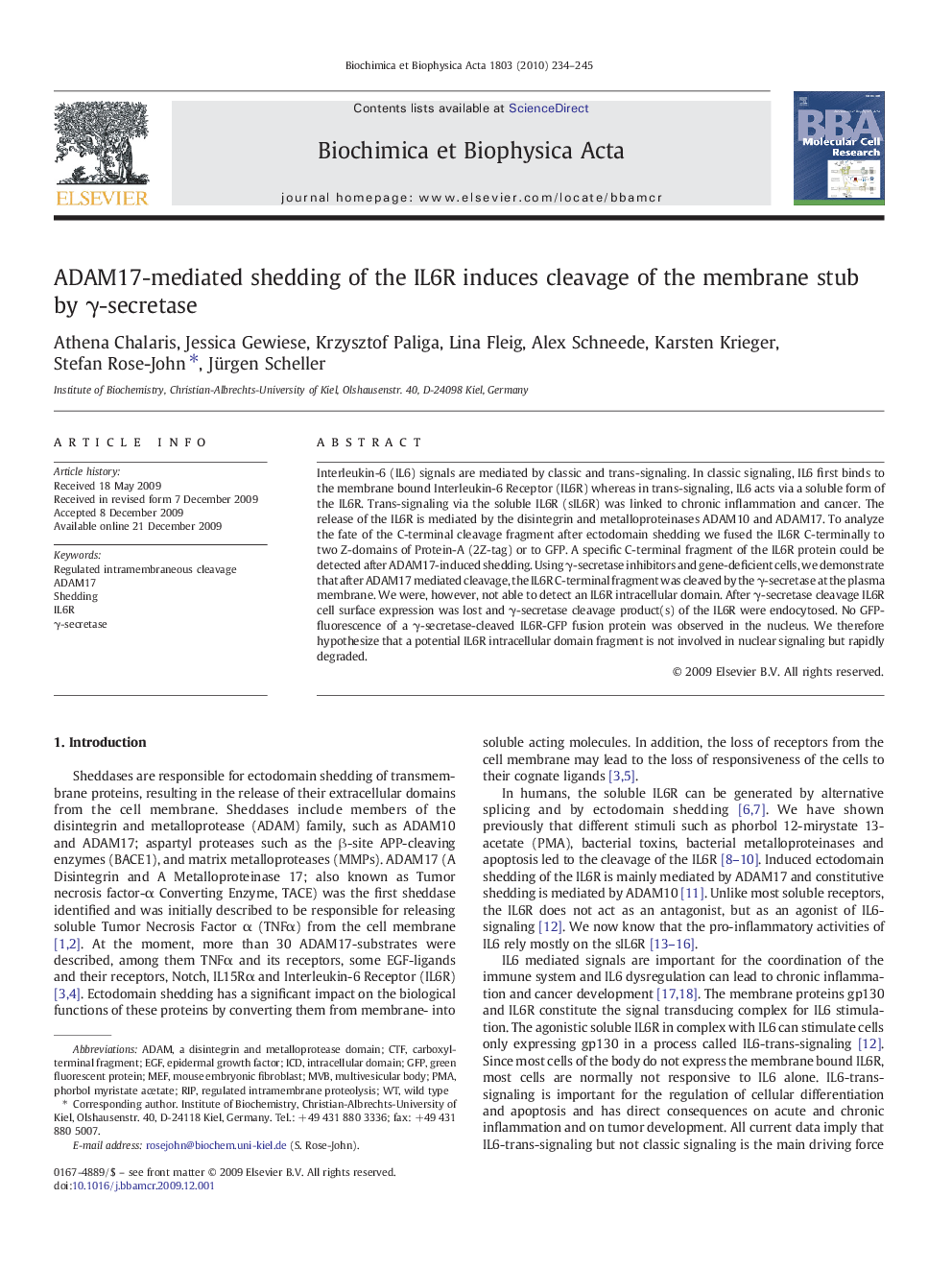| Article ID | Journal | Published Year | Pages | File Type |
|---|---|---|---|---|
| 1951044 | Biochimica et Biophysica Acta (BBA) - Molecular Cell Research | 2010 | 12 Pages |
Interleukin-6 (IL6) signals are mediated by classic and trans-signaling. In classic signaling, IL6 first binds to the membrane bound Interleukin-6 Receptor (IL6R) whereas in trans-signaling, IL6 acts via a soluble form of the IL6R. Trans-signaling via the soluble IL6R (sIL6R) was linked to chronic inflammation and cancer. The release of the IL6R is mediated by the disintegrin and metalloproteinases ADAM10 and ADAM17. To analyze the fate of the C-terminal cleavage fragment after ectodomain shedding we fused the IL6R C-terminally to two Z-domains of Protein-A (2Z-tag) or to GFP. A specific C-terminal fragment of the IL6R protein could be detected after ADAM17-induced shedding. Using γ-secretase inhibitors and gene-deficient cells, we demonstrate that after ADAM17 mediated cleavage, the IL6R C-terminal fragment was cleaved by the γ-secretase at the plasma membrane. We were, however, not able to detect an IL6R intracellular domain. After γ-secretase cleavage IL6R cell surface expression was lost and γ-secretase cleavage product(s) of the IL6R were endocytosed. No GFP-fluorescence of a γ-secretase-cleaved IL6R-GFP fusion protein was observed in the nucleus. We therefore hypothesize that a potential IL6R intracellular domain fragment is not involved in nuclear signaling but rapidly degraded.
